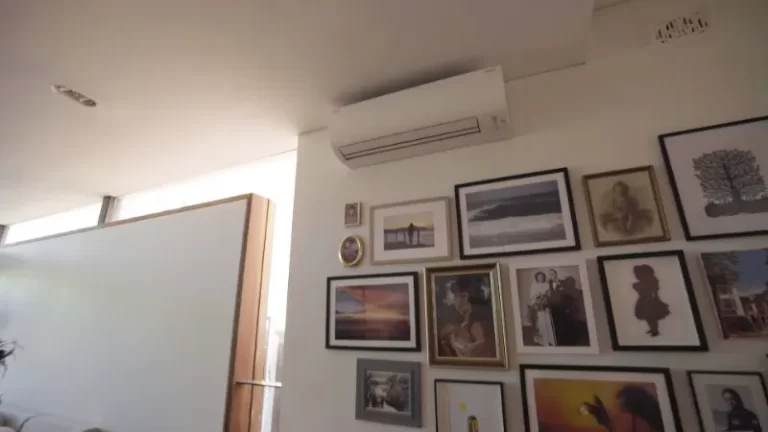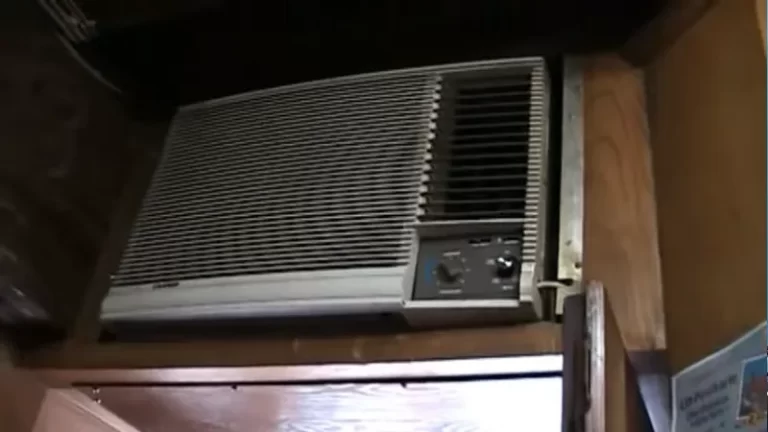Hot Glue Gun Smell in House? Here’s Why & How to Fix It Fast
You’re in the middle of a creative project, your hot glue gun is warmed up, and then you notice it: a distinct, plastic-like odor filling the room. That “hot glue gun smell” is a common experience for crafters, DIY enthusiasts, and homeowners, but it often raises questions. Is it normal? Is it safe? And most importantly, how do you get rid of it?
Understanding this smell is the first step to ensuring a safe and pleasant environment for your projects. This comprehensive guide will break down the causes of that specific odor, address potential health concerns, and provide actionable solutions to eliminate it from your home for good.
You'll Learn About
What Causes the Hot Glue Gun Smell?
The characteristic smell from a hot glue gun isn’t just a random byproduct; it’s a chemical process. The odor comes from the heating of the glue sticks themselves, which are a type of thermoplastic adhesive. When heated, these materials release fumes, which is what you are smelling.
Most common glue sticks are made from a polymer called Ethylene-vinyl acetate (EVA), combined with resins, waxes, and other additives. The specific formulation of these components determines the glue’s properties, like its melting point and adhesive strength, and also the intensity and type of smell it produces when heated.
Normal vs. Problematic Odors
A faint, slightly waxy or plastic smell is normal during the operation of a hot glue gun. However, a strong, acrid, or “burning” smell is a red flag. This often indicates an issue such as the glue overheating, the use of low-quality glue sticks with impurities, or a dirty glue gun with old, charred residue inside.
Ignoring a strong chemical smell can not only make your workspace unpleasant but may also point to potential safety hazards. It’s crucial to distinguish between the normal off-gassing of melting adhesive and the warning sign of a more serious problem.
Is the Hot Glue Gun Smell Toxic? Addressing Health Concerns
A primary concern for many users is whether the fumes from a hot glue gun are harmful to inhale. When used correctly at the recommended temperature, the fumes from hot glue are generally considered low in toxicity. However, “low toxicity” does not mean they are completely harmless, especially with prolonged exposure in an unventilated area.
The fumes can contain Volatile Organic Compounds (VOCs), which may cause irritation to the eyes, nose, and throat. For individuals with asthma or other respiratory sensitivities, these fumes can be particularly bothersome. Symptoms like headaches, dizziness, or nausea after using a glue gun are clear indicators that you need better ventilation.
The Danger of Overheating
The risk of toxicity increases significantly if the glue is overheated. Heating the adhesive 30-40°C above its recommended temperature can cause it to break down chemically. This decomposition can release more concentrated and potentially toxic fumes. Always use your glue gun at the specified temperature and never leave it plugged in unattended for extended periods.
Prioritizing safety means creating a workspace that minimizes your exposure to these fumes. The single most important safety measure you can take is to ensure proper ventilation every time you use your hot glue gun. Open windows, use a fan to direct fumes away from you, or work in a larger, open space.
Top 5 Reasons for a Strong Hot Glue Gun Smell
If the smell from your glue gun seems overpowering, one of these common issues is likely the culprit. Pinpointing the exact cause is the key to solving the problem effectively.
1. You’re Using Low-Quality Glue Sticks
Not all glue sticks are created equal. Cheaper, off-brand sticks often contain impurities or use lower-grade polymers and additives. These impurities can release a much stronger and more unpleasant odor when heated compared to high-quality, reputable brands.
Investing in better glue sticks is a simple yet highly effective way to reduce odors. Look for products specifically marketed as “low-odor” or “odorless,” which use cleaner-burning formulas designed to minimize fumes.
2. Mismatched Glue Gun and Glue Stick Temperatures
Hot glue guns and sticks are designed to work at specific temperatures—typically categorized as high-temp or low-temp. Using low-temperature glue sticks in a high-temperature gun is a frequent cause of burning smells. The high heat scorches the low-temp glue, causing it to break down and release acrid smoke.
Conversely, using high-temp sticks in a low-temp gun can result in improper melting and weak bonds. Always check the packaging for both your gun and your glue sticks to ensure they are compatible. This simple check can prevent both bad smells and project failures.
3. Your Glue Gun is Dirty or Clogged
Over time, small amounts of glue can drip and harden inside the gun’s heating chamber and around the nozzle. This old residue gets repeatedly reheated with every use, eventually charring and burning. This burnt glue is a major source of persistent, unpleasant odors.
Regularly cleaning your glue gun is essential maintenance. A clean gun not only smells better but also functions more efficiently and safely. A clean tool is a reliable tool, a principle that applies whether you’re crafting or facing a situation where your wrench wont grip; proper maintenance is always key.
4. The Glue Gun Has Been Overheating
Leaving a glue gun plugged in and idle for too long can cause the adhesive inside to overheat, even if it’s the correct type. Most glue guns don’t have an automatic shut-off feature. If you’re not actively using it, it’s best to unplug it for a few minutes to allow it to cool down slightly.
This practice not only prevents strong odors but also reduces the risk of the gun becoming a fire hazard. Treat your hot glue gun like any other heat-producing appliance and handle it with care.

5. Underlying Electrical Issues
In rare cases, a strong burning smell, particularly one that smells like burning plastic rather than just hot glue, can indicate an electrical problem within the gun itself. This could be faulty wiring or a malfunctioning heating element. If you suspect an electrical issue, unplug the gun immediately and discontinue use. It is not safe to use a tool with compromised electrical components.
A Step-by-Step Guide to a Smell-Free Home
Once you’ve identified the source of the odor, you can take concrete steps to eliminate it and prevent it from returning. Follow this plan for a fresher, safer crafting experience.
Step 1: Ventilate Your Workspace Immediately
Your first action should always be to improve air circulation. Open windows and doors to create a cross-breeze. If possible, use an exhaust fan or place a box fan in the window facing outwards to pull the smelly air out of the room.
Step 2: Upgrade Your Materials
Make a conscious choice to purchase higher-quality supplies. While they may cost slightly more, the benefits in terms of reduced odor and better performance are well worth it. This is your most proactive step towards preventing the problem.
| Glue Stick Type | Common Polymer Base | Typical Melting Point | Odor Level |
|---|---|---|---|
| Standard Craft | Ethylene-vinyl acetate (EVA) | 170-190°C (High-Temp) | Moderate |
| Low-Melt / “Cool” | EVA (Modified) | 120-130°C (Low-Temp) | Low to Moderate |
| Specialty / Packaging | Metallocene / Polyamide | 160-180°C | Very Low / Odorless |
| Woodworking | Polyamide | 190-215°C | Low |
Step 3: Deep Clean Your Hot Glue Gun
A thorough cleaning can work wonders. Before you begin, ensure the gun is unplugged and completely cool. You can then follow a safe cleaning procedure to remove built-up residue.
A popular and effective method involves using aluminum foil. Wad a piece of foil into a ball and, once the gun is slightly warm (plug it in for just a minute or two and then unplug), gently rub the nozzle and body to scrape off old glue. For stubborn residue on the outside, a cloth dampened with a small amount of rubbing alcohol can be used on the cool plastic casing.
Step 4: Adopt Safe Operating Habits
Incorporate safety into your routine. Always place the glue gun on its stand when not in use to prevent the hot nozzle from touching surfaces. Unplug the gun if you’re stepping away for more than a few minutes. This simple habit prevents overheating and significantly reduces ambient fumes.
Advanced Solutions for Sensitive Users
For dedicated crafters or individuals who are particularly sensitive to smells, standard ventilation might not be enough. In these cases, consider more advanced solutions for maintaining air quality.
Using Air Purifiers and Fume Extractors
An air purifier equipped with an activated carbon filter is excellent for capturing and neutralizing VOCs and other odor-causing particles from the air. Place it near your work area to effectively clean the air as you work.
For those who use a hot glue gun for extended periods, a small benchtop fume extractor can be a worthwhile investment. These devices have a small fan and carbon filter that directly pull fumes away from your project and neutralize them before they can spread throughout the room.
What to Do When the Smell Lingers
Sometimes, even after you’ve unplugged the gun and opened the windows, a faint smell can linger in the air or on fabrics. To neutralize these residual odors, you can use common household items.
Placing bowls of white vinegar or baking soda around the room can help absorb lingering smells. For a more immediate solution, a light mist of a natural air freshener or a simmer pot of citrus peels and cinnamon on the stove can quickly replace the unpleasant odor with a more agreeable scent. Ensuring your home’s general air quality is good, for example by checking for issues like an ac drain pipe facing up, can also help dissipate unwanted smells more quickly.
A Proactive Approach to Prevention
The best way to deal with the hot glue gun smell is to prevent it from becoming a problem in the first place. This proactive mindset is crucial for any successful project, whether you’re crafting a small decoration or learning how to install purlins on edge for a larger construction.
Your Smell-Free Checklist:
- Ventilate First: Before you even plug in the gun, open a window or turn on a fan.
- Buy Quality: Invest in low-odor glue sticks from reputable brands.
- Match Your Temps: Double-check that your gun and glue sticks are a compatible pair.
- Clean Regularly: Wipe down your glue gun’s nozzle and body after every few uses.
- Unplug When Idle: Don’t let the gun sit hot when you’re not actively using it.
Your Path to a Fresher, Safer Crafting Environment
The smell from a hot glue gun doesn’t have to be an unavoidable nuisance. By understanding its causes—from the type of glue sticks you use to the cleanliness of your tool—you can take control of your creative environment. A strong odor is often a sign that something needs to be adjusted for better safety and efficiency.
By implementing these simple strategies of proper ventilation, using high-quality materials, and practicing regular maintenance, you can significantly reduce or even eliminate the hot glue gun smell. This allows you to focus on what truly matters: bringing your creative ideas to life in a clean, safe, and pleasant space.


